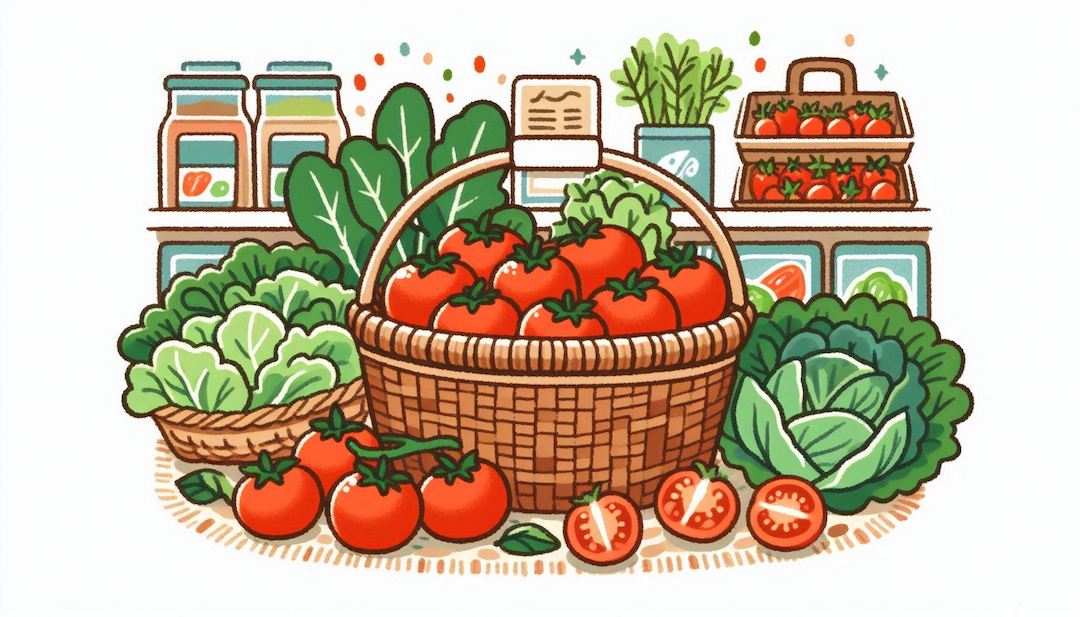 On May 2, 2025, Williams Farms Repack LLC issued a voluntary recall of tomatoes due to potential Salmonella contamination. On May 28, 2025, the U.S. Food and Drug Administration (FDA) elevated this to a Class I recall—the agency’s highest risk level—indicating the use of these products “could cause serious adverse health consequences or death.” fda.govabcnews.go.com
On May 2, 2025, Williams Farms Repack LLC issued a voluntary recall of tomatoes due to potential Salmonella contamination. On May 28, 2025, the U.S. Food and Drug Administration (FDA) elevated this to a Class I recall—the agency’s highest risk level—indicating the use of these products “could cause serious adverse health consequences or death.” fda.govabcnews.go.com
According to the FDA, Williams Farms Repack LLC was notified on April 29, 2025, by Southeast Tomato Distributors that tomatoes supplied from H&C Farms might be contaminated. These tomatoes were distributed between April 23 and April 28, 2025, to wholesalers and distributors in Georgia, North Carolina, and South Carolina. No illnesses have been reported to date. fda.govabc11.com
Products Affected
All recalled tomatoes bear either the Williams Farms Repack label or the H&C Farms label. Below are the specific packaging types, lot codes, and (where applicable) UPC codes: fda.govabc11.com
- 5×6 25 lb boxes (H&C Farms Label)
- Lot Code: R4467
- 6×6 25 lb boxes (H&C Farms Label)
- Lot Codes: R4467, R4470
- Combo 25 lb boxes (H&C Farms Label)
- Lot Code: R4467
- 4×4 two-layer flats (Williams Farms Repack Label)
- Lot Code: R4467
- 4×5 two-layer flats (Williams Farms Repack Label)
- Lot Code: R4467
- 60-count two-layer flats (Williams Farms Repack Label)
- Lot Code: R4467
- 60-count 18 lb loose (Williams Farms Repack Label)
- Lot Codes: R4467, R4470
- XL 18 lb loose (Williams Farms Repack Label)
- Lot Code: R4467
- 3-count trays (Williams Farms Repack Label)
- UPC: 0 33383 65504 8
- Lot Code: R4467
These products were sold to wholesale distributors who supplied various grocery stores and food service outlets in the tri-state region. Consumers may find them at local produce sections under the Williams Farms Repack or H&C Farms labeling.
What Consumers Should Do
- Do Not Consume Recalled Tomatoes
- If you have any tomatoes matching the above labels, lot codes, or UPC, do not eat them under any circumstances.
- If you purchased these products:
- Return them to the place of purchase for a full refund, or
- Discard them in a sealed bag to prevent cross-contamination.
- Inspect Your Home for Recalled Products
- Check your refrigerator, freezer, pantry, and any products stored in proximity to recalled tomatoes (e.g., salsas, sauces).
- If uncertain about the lot code or packaging, err on the side of caution and discard. fda.gov
- Prevent Cross-Contamination
- Clean and sanitize any surfaces, utensils, cutting boards, or containers that may have come into contact with the recalled tomatoes.
- Wash hands thoroughly with soap and water for at least 20 seconds after handling suspected products. fda.gov
- Monitor for Symptoms if You’ve Already Consumed Them
- Anyone who has recently eaten these tomatoes—especially infants, older adults, pregnant people, or those with weakened immune systems—should be vigilant for signs of Salmonella infection (see next section).
Symptoms of Salmonella Infection
Salmonella bacteria can cause a range of gastrointestinal and systemic symptoms, typically manifesting 6 hours to 6 days after ingestion. Common symptoms include: fda.gov
- Diarrhea (sometimes bloody)
- Fever (often above 100.4 °F)
- Abdominal cramps and stomach pain
- Nausea and vomiting
- Headache
- In severe cases, Salmonella can invade the bloodstream, leading to:
- Dehydration (due to prolonged vomiting or diarrhea)
- Septicemia (bloodstream infection)
- Endocarditis (infection of heart lining)
- Arterial infections (e.g., infected aneurysms)
- Reactive arthritis
Those most at risk for severe or life-threatening complications include:
- Infants and young children
- Adults aged 65 and older
- Pregnant people
- Individuals with weakened immune systems (e.g., undergoing chemotherapy, living with HIV/AIDS, or taking immunosuppressive medications)
Steps to Take If You Develop Symptoms
- Seek Prompt Medical Attention
- Contact your healthcare provider immediately if you experience:
- High fever (above 102 °F)
- Bloody diarrhea
- Persistent vomiting preventing you from keeping fluids down
- Signs of dehydration (e.g., dry mouth, decreased urination, dizziness)
- Let the provider know you may have consumed recalled tomatoes linked to Salmonella. fda.gov
- Contact your healthcare provider immediately if you experience:
- Hydration and Rest
- Drink plenty of clear fluids (water, electrolyte solutions) to prevent dehydration.
- Avoid anti-diarrheal medications unless specifically advised by a medical professional, as they can prolong the infection. fda.gov
- Diagnostic Testing
- Your doctor might recommend a stool culture to confirm Salmonella.
- In severe cases or for high-risk patients, hospitalization and intravenous (IV) fluids may be necessary.
- Antibiotic Treatment
- Antibiotics are not always required for healthy adults with mild symptoms, but may be prescribed for severe infections or high-risk patients.
- Follow the medical team’s instructions closely, completing the full course if antibiotics are prescribed.
- Prevent Spread to Others
- Wash hands thoroughly after using the bathroom and before preparing food.
- Avoid preparing food for others until you have been symptom-free for at least 48 hours.
Additional Precautions
- Pregnant People & Infants: Because Salmonella infection during pregnancy can cause complications (including dehydration and, rarely, transmission to the infant), consult your obstetrician immediately if you suspect exposure.
- Elderly & Immunocompromised: If you fall into one of these high-risk groups, seek medical care at the first sign of symptoms—even mild gastrointestinal upset. Early intervention can prevent severe complications.
- Food Handlers & Caregivers: If you work in a setting where you prepare food for others or provide direct care to vulnerable populations, notify your supervisor and refrain from work until you are symptom-free for at least 48 hours.
Key Takeaways
- Do not eat any tomatoes labeled Williams Farms Repack or H&C Farms with lot codes R4467 or R4470 (including all associated packaging formats).
- Return or discard all matching products immediately.
- Clean and sanitize any surfaces or utensils that may have come in contact with these tomatoes.
- Monitor for Salmonella symptoms—diarrhea, fever, abdominal cramps, vomiting—and seek medical care if they develop, especially for high-risk individuals.
By following these steps, consumers can minimize their risk of severe Salmonella infection and take prompt action should symptoms arise.
-Phan Trần Hương-
Sources:
- FDA – Williams Farms Repack LLC Recalls Tomatoes Due to Possible Salmonella Contamination
https://www.fda.gov/safety/recalls-market-withdrawals-safety-alerts/williams-farms-repack-llc-recalls-tomatoes-due-possible-salmonella-contamination - People.com – FDA Warns That Tomatoes Sold in These 3 States Could Cause Serious Illness or ‘Death’
https://people.com/fda-warns-that-tomatoes-sold-in-these-3-statess-could-cause-serious-illness-or-death-11747209 - Health.com – Tomato Recall Gets Highest Risk Warning Over Salmonella Fears—What You Need to Know
https://www.health.com/tomato-recall-2025-salmonella-risk-level-11746461 - ABC News – FDA Elevates Tomato Recall to Highest Risk Level Over Potential Salmonella Contamination
https://abcnews.go.com/GMA/Food/fda-elevates-tomato-recall-highest-risk-level-potential/story?id=122447821 - Fox Business – FDA Issues Highest-Level Recall for Tomatoes Linked to Salmonella Contamination
https://www.foxbusiness.com/lifestyle/fda-issues-highest-level-recall-tomatoes-linked-salmonella-contamination - CDC – Salmonella Information (general overview về triệu chứng và phòng ngừa)
https://www.cdc.gov/salmonella/index.html - FDA – Salmonella: Frequently Asked Questions (thông tin về bệnh lý và cách xử lý nếu bị nhiễm)
https://www.fda.gov/food/foodborne-pathogens/salmonella
